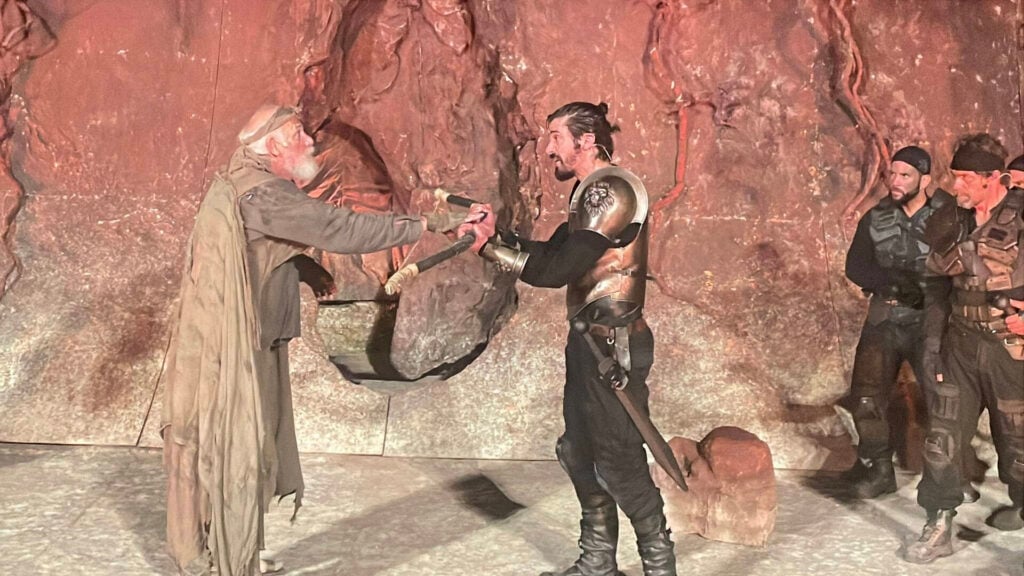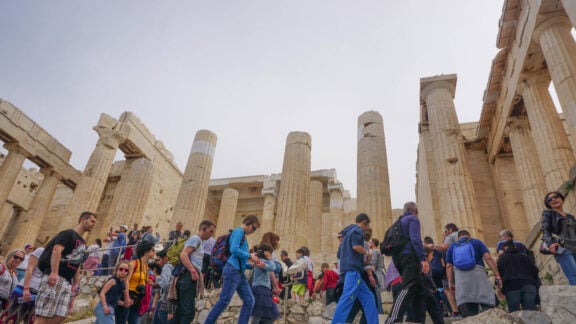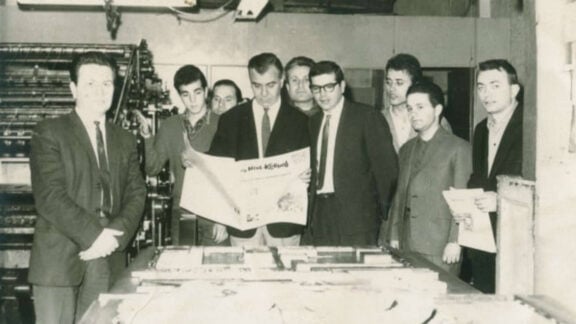On the evenings of 2nd and 3rd of August this year, at the ancient amphitheatre of Ifestia on the northern coast of the northern Aegean Island of Lemnos, Philoctetes returned to his roots.
Lemnos is an ancient land, with a rich part in Hellenic mythology.
The story of this play written by Sophocles concerns a lesser known but important aspect of the siege of Troy, the broader story of which is the subject of Homer’s The Iliad.
The play is a tragedy set on Lemnos.
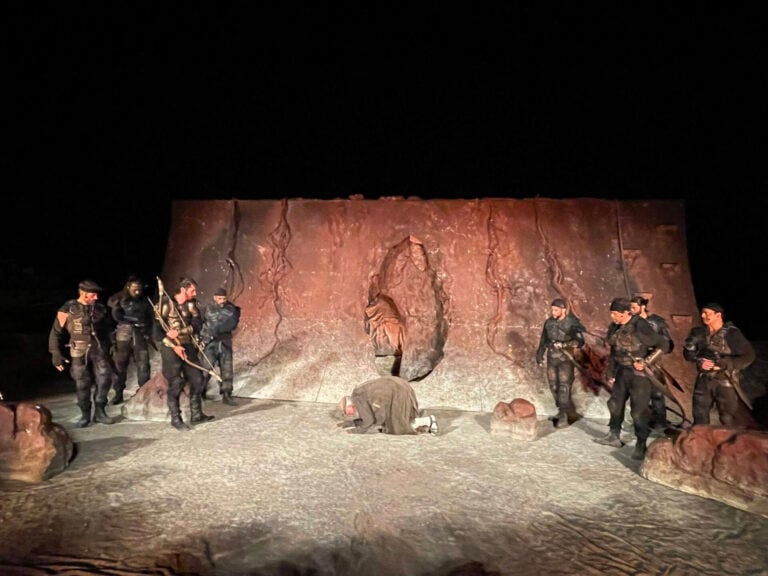
The story of Philoctetes takes place at the last year of the Trojan War. The Siege has come to a dead end and a prophecy says that only with the bow and the arrows of Herakles they will win. But the bow and the arrows are in the possession of the archer Philoctetes, the King of Melivoia, a city in Thessaly.
Ten years earlier none other than Odysseus had abandoned Philoctetes on Lemnos. The archer had been bitten by a snake and the resulting wound and terrible smell, along with Philoctetes screams, so demoralised his men that Odysseus abandons Philoctetes on Lemnos. He remains there, living in a cave for ten years.
Now Odysseus, along with Neoptolemus (the son of Achilles) have come back to take the bow and the arrows.

After a long discussion with Philoctetes, who of course does not want to give away his weapons, which by the way are the only means to find food, there seems there is no way to take the bow. At this point, the spirit of Herakles appears and offers the solution that Philoctetes will be cured from his wound, he will join the troops and by using the bow and the arrows will give the victory to the Greeks.
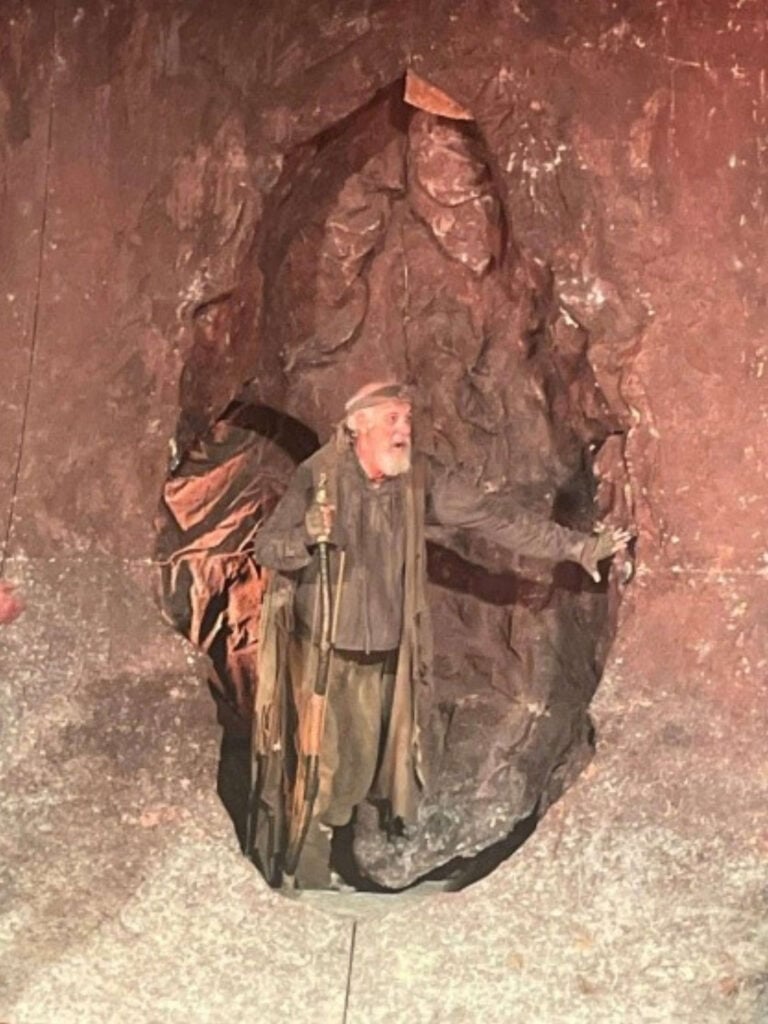
How appropriate that this play should be performed on Lemnos and it this location. The amphitheatre at Ifestia is one of Lemnos ancient sites, the location of a major settlement. And the mythological Philoctetes’ Cave, lies only a couple of kilometers away from Ifestia.
The proposal to perform the play on Lemnos was submitted to the Lemnos Municipality last March and was gladly accepted, due to importance of the play and the famous actors that were scheduled to perform it on Lemnos.
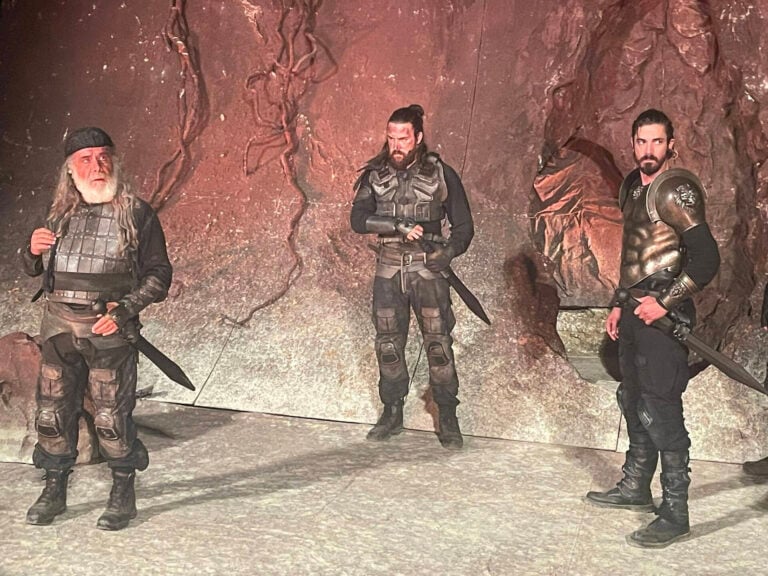
To ensure the performances success and to maximise the ability of people to attend, the Municipality agreed to underwrite the cost of two performances.
The performances were held in the evening, as the sun set and amongst the cool of the evening. A very environment amongst the ancient setting.
The performance presented the play’s story in a very comprehensive way, incorporating all its deeper meanings and philosophical aspects of the original script of Sophocles.
The company of actors was led by the famous Greek actor Giorgos Kimoulis in the role of Philoctetes who was also the play’s director.
Other actors included the young rising star Dimitris Gotsopoulos in the role of Neoptolemus and Thodoris Katsafados in the role of Odysseus, along with seven other young actors in the supporting roles.

It was great to see that both performances were sold out despite the distant location of the theatre and the 17 euro ticket price.
The enthusiastic crowd was joined by a number of dignitaries including the Mayor of Lemnos Eleonora Georga, the Bishop of Lemnos and Agios Ephstratios, the Brigadier General of the Army of Lemnos and other local authorities.

At the conclusion of the play the audience responded with long applause.
The historian Jim Claven, who has visited Lemnos and the locations connected to the play on many occasions, expressed his warm support for this dramatic initiative by the Municipality.
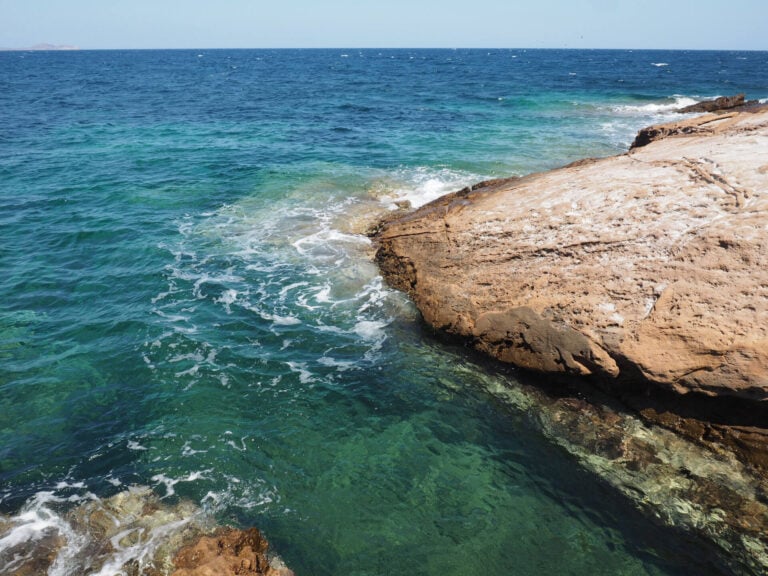
“As someone who has always enjoyed classical literature since I was introduced to it in translation at school, I am excited to see that a famous but little performed classical play recently returned to the location where it was. Lemnos has a rich history, stretching back into antiquity and Greek mythology that may not be appreciated by many visitors. The Municipality is commended for adding such literary events to its tourism and cultural calendar,” Claven said.
Claven pointed out that he has not only visited Ifestia but also Philoctetes Cave, most recently in 2022 accompanied by the Vice President of Melbourne’s Greek Community Vicki Kyritsis.
He also pointed out that the locations of the play have particular relevance to Australians.
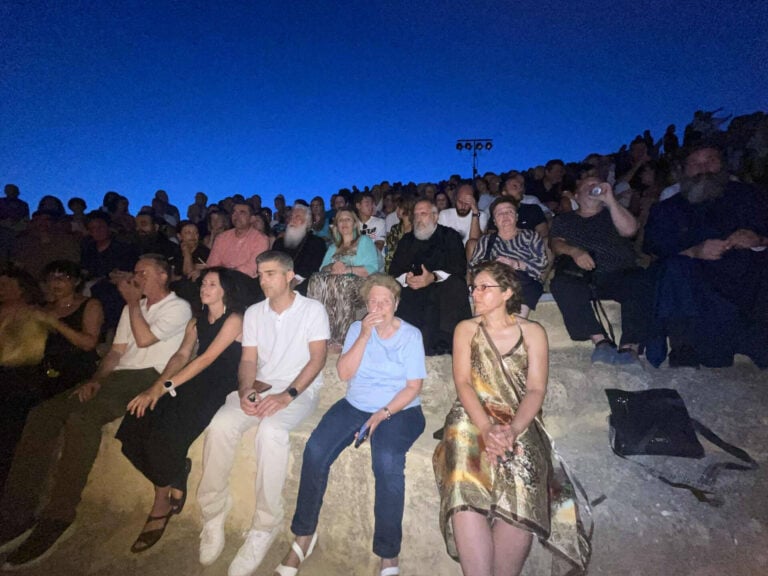
The nearby waters of Kotsinas Bay –which can be seen clearly from the amphitheatre at Ifestia- is the same Bay from which a major component of the Anzacs departed for Gallipoli heading for Anzac Cove on 25 April 1915. The Bay was then known as Pournia Bay.
“I have always thought how curious that these Anzacs departed for Gallipoli in the wake of Odysseus and Philoctetes of ancient legend,” Claven said.
*Dimitris Boulotis is the Deputy Mayor of Lemnos, with responsibility for culture and tourism. He is also an honorary member of Melbourne’s Lemnos Gallipoli Commemorative Committee and has represented them on a number of occasions at Lemnos’ annual Gallipoli campaign commemorations. He thanks both Katerina Fikari, Giorgos Tramontanis and Jim Claven for permission to reproduce their photographs.
